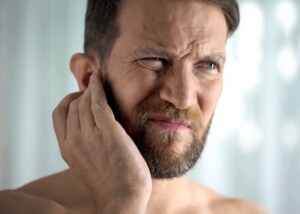
TMJ disorder, with its ability to cast all sorts of troublesome symptoms onto the sufferer, can also affect neck muscles.
“Approximately 80 percent of all ‘pain’ patients have lost some physiologic curvature of the upper cervical spine,” says Jeffrey Haddad, DDS, of Doolin Haddad Advanced Dentistry in Rochester, MI.
“These people may experience daily headaches, neck pain, vertigo (dizziness) and even ringing in the ears which are all common symptoms of a temporomandibular joint (TMJ) disorder,” explains Dr. Haddad. tmj neck muscles
“Most people would never suspect that the neck and jaw would be related, but they can directly affect the other, causing discomfort or pain if they are out of balance. tmj neck muscle
“In fact, the latest research is showing that a bad neck position and poor posture can be one of the main causes of a TMJ disorder, and unless it is properly addressed, patients will continue to suffer from the previously mentioned symptoms.”
“There is a direct relationship between the upper cervical spine and a bad jaw position,” says Dr. Haddad.
“The nerves of these structures, specifically the upper three cervical vertebrae, are physiologically derived from the trigeminal cervical nucleus, just like the main nerves of the face and jaws.
“Therefore, if a person has compression in their upper cervical spine resulting in misalignment, this will also force them into an uncomfortable and misaligned jaw position.”
What about the other way around? Can TMJ disorder have a bad effect on the neck muscles?
Dr. Haddad explains, “Vice versa, if a patient has a compromised bite due to older dental work, clenching and grinding, or crowding, this can cause the patient to change their head position resulting in neck discomfort or pain.
“Furthermore, the relationship between the masticatory and cervical muscles is important when considering the effects of head posture and the resting position of the mandible.
“TMJ often alters the neck posture, as patients can develop a forward head posture to try and compensate for their jaw pain, or it is a compensatory mechanism to open the airway for oxygen.”
Something that Will Surprise You
It is not impossible for incorrect walking on a treadmill to negatively affect the neck muscles and/or aggravate a pre-existing TMJ problem.
As a former personal trainer, I am always aware of how people walk on a treadmill.
The other day I saw a man tugging at the front bar with his hands as he took each unnatural step.
His upper body was lurched forward, butt slightly sticking out, and he had forward head posture.
His body was locked into a very bad gait pattern. Though I’m sure that the forward head posture is always present in this person, the front-bar tugging was making it worse.
Gait is more than just “how” a person walks. Gait is the entire movement chain from head to toe.
If it’s thrown off whack by crazy walking patterns from holding onto a treadmill, this can have a bad effect on the neck and make a TMJ issue worse.
If you have a habit of holding onto a treadmill, especially if it’s a tight grip with a fast pace, END this bad habit.
See if your neck pain or tightness, and/or jaw pain and other odd symptoms don’t start disappearing.

Dr. Haddad lectures nationally on cosmetic dentistry, TMJ disorders and practice marketing, and utilizes the latest technology to ensure the utmost in patient comfort and care.
 Lorra Garrick has been covering medical, fitness and cybersecurity topics for many years, having written thousands of articles for print magazines and websites, including as a ghostwriter. She’s also a former ACE-certified personal trainer.
Lorra Garrick has been covering medical, fitness and cybersecurity topics for many years, having written thousands of articles for print magazines and websites, including as a ghostwriter. She’s also a former ACE-certified personal trainer.
.


























